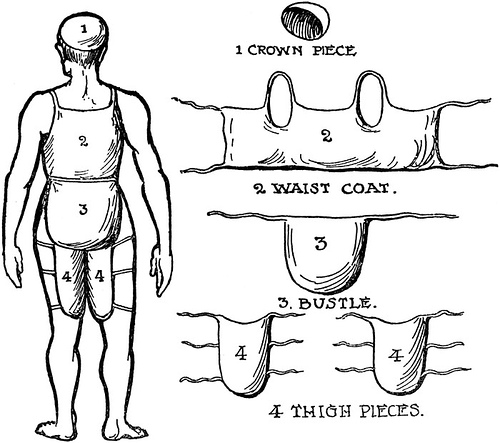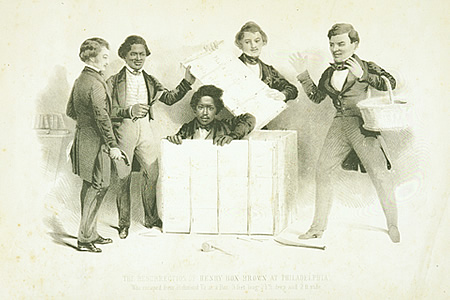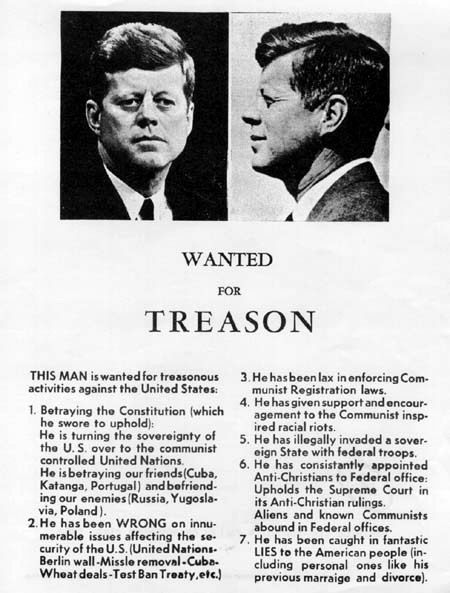
“The accompanying picture is no imaginary instance, but is actually taken from an official document. The figure is supposed to represent one of these Deal boatmen, and the numerals will explain the methods of secreting the tea. (1) Indicates a cotton bag which was made to fit the crown of his hat, and herein could be carried 2 lbs. of tea. He would, of course, have his hat on as he came ashore, and probably it would be a sou’wester, so there would be nothing suspicious in that. (2) Cotton stays or a waistcoat tied round the body. This waistcoat was fitted with plenty of pockets to hold as much as possible. (3) This was a bustle for the lower part of the body and tied on with strings. (4) These were thigh-pieces also tied round and worn underneath the trousers. When all these concealments were filled the man had on his person as much as 30 lbs. of tea, so that he came ashore and smuggled with impunity. And if you multiply these 30 lbs. by several crews of these Deal boats you can guess how much loss to the Revenue the arrival of an East Indiamen in the Downs meant to the Revenue.”
— East Indian smugglers’ scheme to evade English customs officers, circa 1810. From E. Keble Chatterton, King’s Cutters and Smugglers, 1700-1855, 1912





